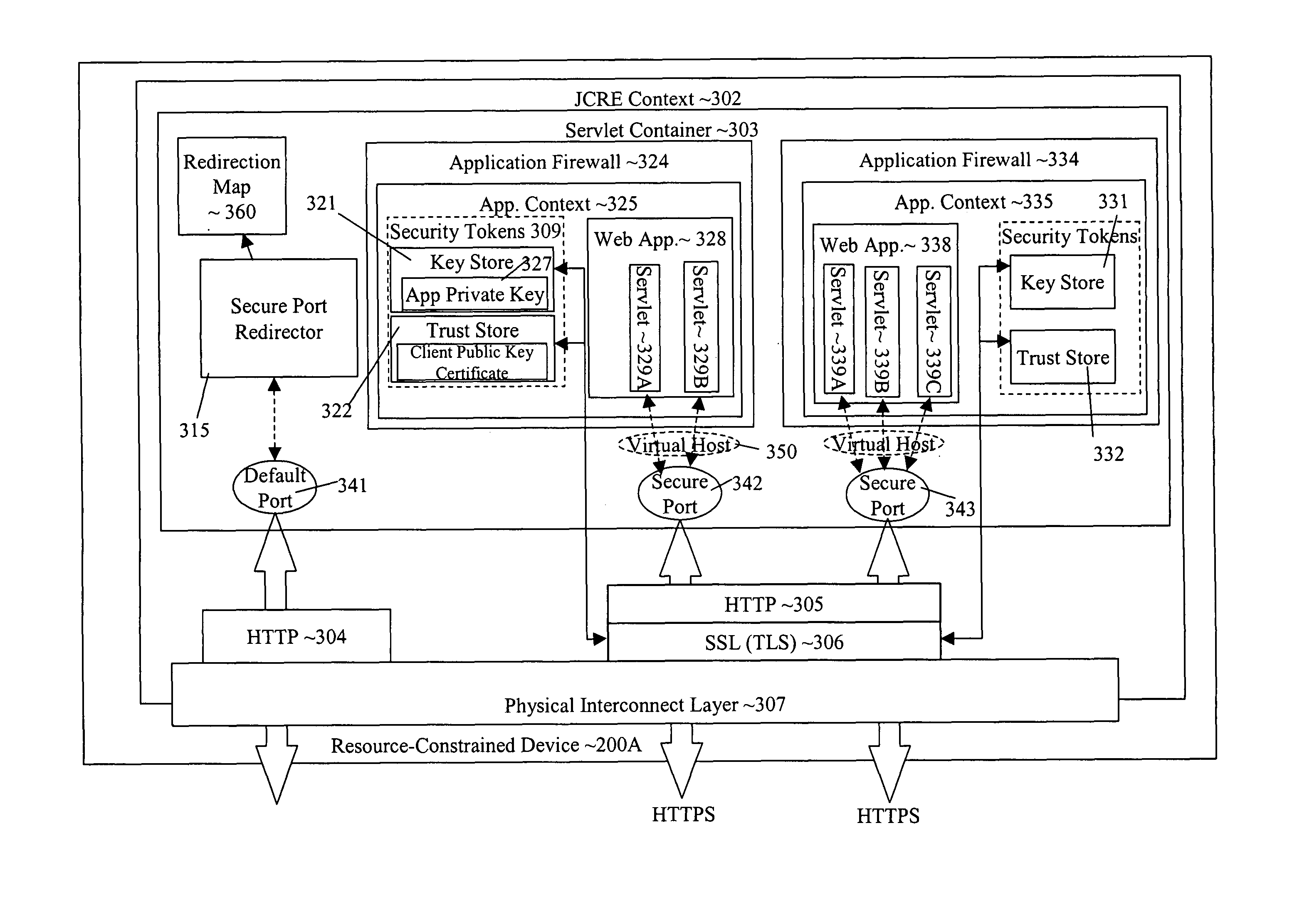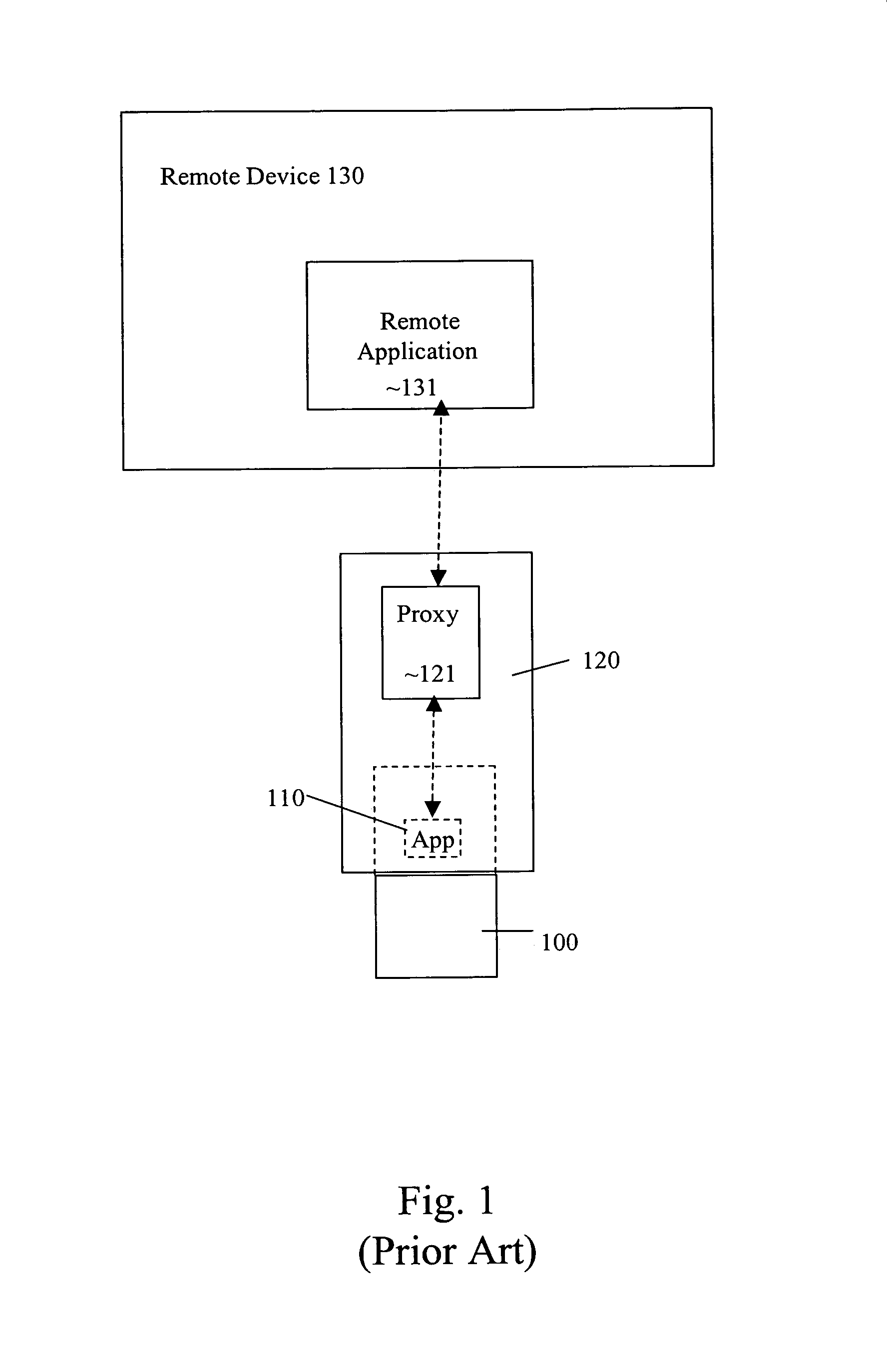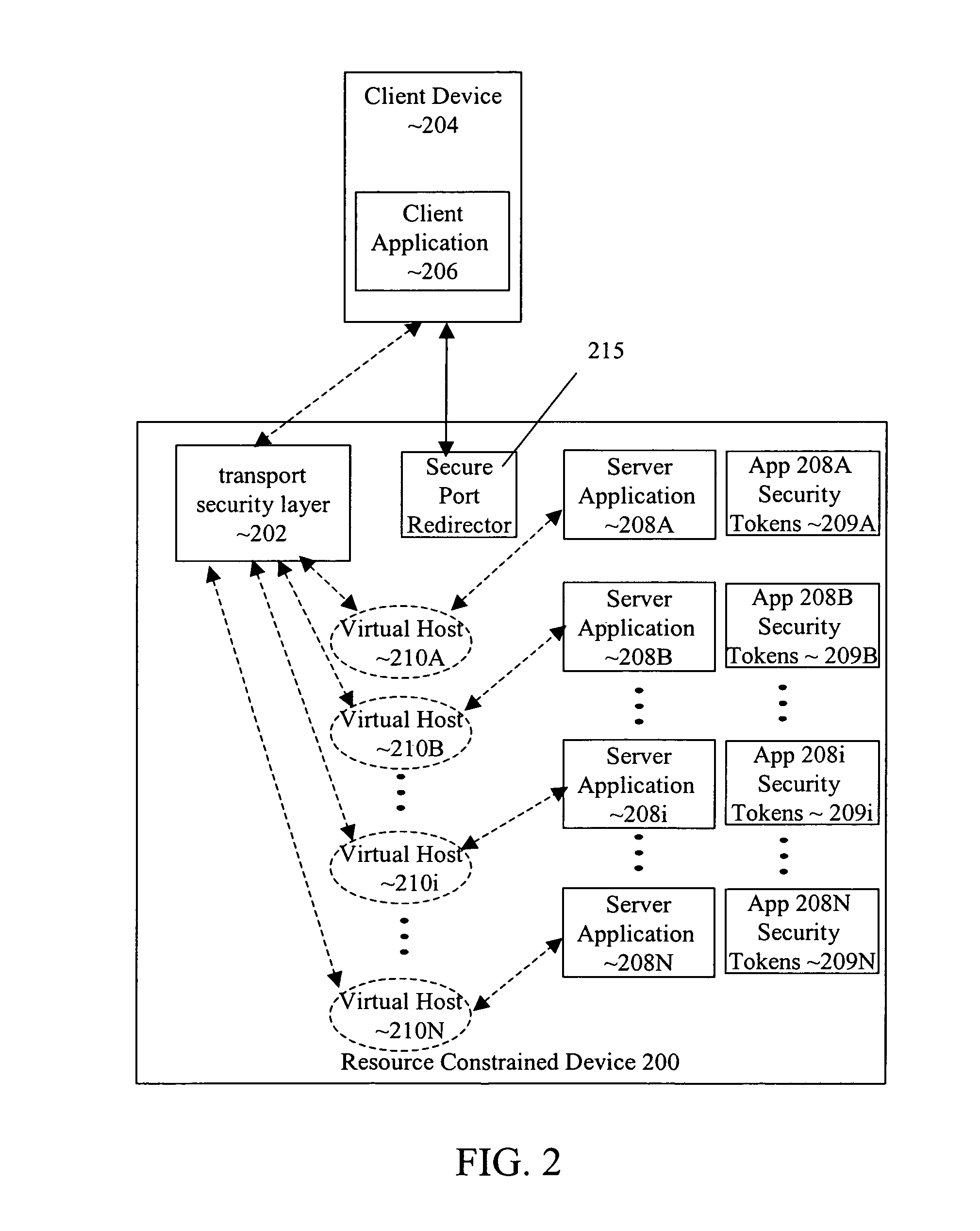Transport-level web application security on a resource-constrained device
a resource-constrained device and transport-level technology, applied in the field of server applications, can solve problems such as the inability to authenticate each off-card client and/or each on-card application service, the security of the operations underlying the services also raises issues, and the potential for sensitive information to be accessible, so as to facilitate expanded and secure communication
- Summary
- Abstract
- Description
- Claims
- Application Information
AI Technical Summary
Benefits of technology
Problems solved by technology
Method used
Image
Examples
Embodiment Construction
[0066]According to one embodiment of the invention, the prior art problems associated with virtual hosts on a resource-constrained device have been overcome. Each on-card application 208i, where i ranges from A to N, deployed on resource-constrained device 200 owns and controls security tokens 209i that are protected from each of the other on-card applications deployed on resource-constrained device 200. In one embodiment, each on-card application or group of on-card applications along with the security tokens for the applications are contained within the boundary of a firewall that prevents the other on-card applications from accessing the security tokens.
[0067]Security tokens 209i are used with transport security layer 202 to authenticate requests from an off-card application 206, executing on a remote device 204, and to encrypt and decrypt data exchanged with off-card application 206. Since security tokens 209i are exclusive to application 208i, on-card application 208i can rely ...
PUM
 Login to View More
Login to View More Abstract
Description
Claims
Application Information
 Login to View More
Login to View More - R&D
- Intellectual Property
- Life Sciences
- Materials
- Tech Scout
- Unparalleled Data Quality
- Higher Quality Content
- 60% Fewer Hallucinations
Browse by: Latest US Patents, China's latest patents, Technical Efficacy Thesaurus, Application Domain, Technology Topic, Popular Technical Reports.
© 2025 PatSnap. All rights reserved.Legal|Privacy policy|Modern Slavery Act Transparency Statement|Sitemap|About US| Contact US: help@patsnap.com



